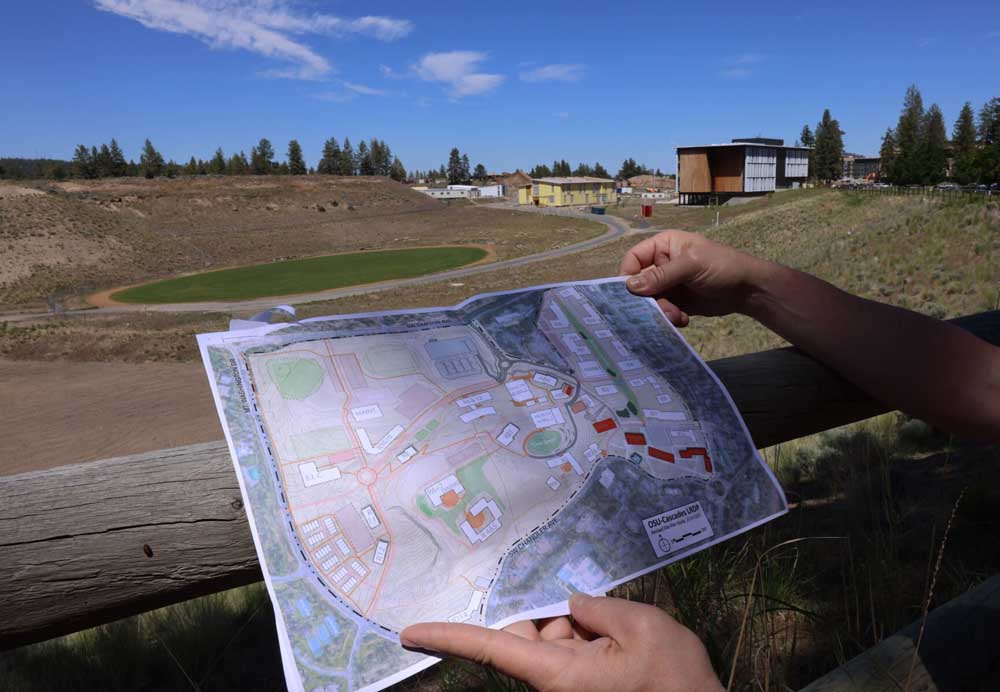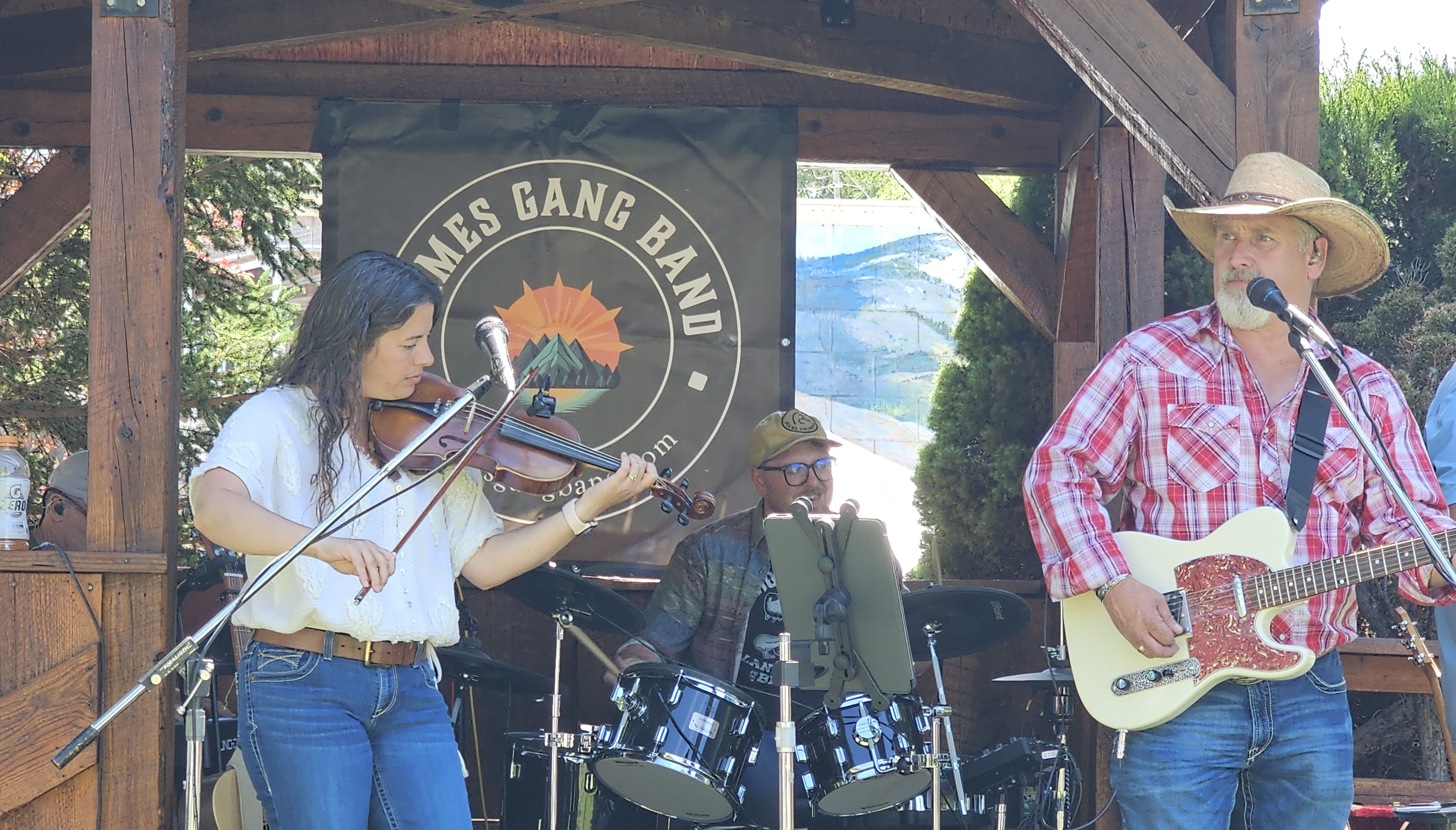OSU-Cascades looking ahead to nearly doubling enrollment by 2030
Published 3:00 pm Sunday, June 9, 2024

- Jarrod Penttila, associate director of capital planning and construction, holds a drawing showing future development plans at OSU-Cascades in Bend.
BEND — As part of its strategic plan last fall, Oregon State University announced the intention to grow enrollment to 2,200 students at its Bend branch campus by 2030.
The wheels have been turning in OSU-Cascades Chancellor Sherman Bloomer’s head ever since, and he’s excited to put ideas into place in the coming months.
“We spent a good part of the year having a conversation about what the plan is for getting there,” he said. “Some growth will come because the region is projected to still grow in population in the 18-to-24-year-old demographic.”
Bloomer and other administrators had conversations with OSU-Cascades faculty and staff, as well as OSU administrators. They will take the summer to analyze the ideas with the highest potential, and organize further in the fall. OSU-Cascades currently has approximately 1,300 students.
Planning a mechanical engineering program
Administrators will look at filling capacity in existing programs, building transfer pathways between community colleges and OSU-Cascades and improving the retention rate.
“Enrollments in the community colleges are starting to grow back, so we expect we’re going to see more students,” said Bloomer.
“We’re going to think about making it as easy to transfer from a community college into a four-year program as it can be,” Bloomer said.
The work put into existing programs will get the university halfway to its goal, said Bloomer. The rest will come from new programs that are put into place between now and 2030.
OSU-Cascades will start a program in mechanical engineering this fall and is looking to restart a program in accounting for fall 2025. Administrators are also having conversations about what other business programs to start.
“By the end of fall, hopefully we’re going to have a plan, here’s the working plan to get us to the fall of 2030,” said Bloomer. “That’ll change as we go along, but it’ll at least give us a road map to start from.”
In the coming months, Bloomer also plans to have conversations relating to legislative funding for a health and recreation center and phase three of OSU-Cascades’ land remediation, or reclaiming land on the campus previously used as a landfill and pumice mine. He’s planning communication with partners who may advocate for the university in the Legislature.
Bloomer sees it as a drawback that the university doesn’t have a health and recreation center for students. The university is able to provide gym access to students in Bend, but it is only accessible to those who can travel across town and pay for it. It’s not a very equitable solution, he said.
“For us, this is a huge part of getting to the enrollment goals we want to see,” said Bloomer. “The reason that universities build these is that there’s a ton of research showing that physical activity, physical health contribute to mental health, and those things all contribute to higher rates of retention and higher graduation rates.”
OSU has helped consider how programs would be implemented, such as possibly organizing hybrid programs taught through both campuses.
“Of our resident Oregonian students, 55% of them are still from the three-county Central Oregon area,” said Bloomer. “It really is that local access really matters. I’ve heard people ask us, ‘I need people with accounting backgrounds, I need mechanical engineers,’ and so we’re trying to think about how we respond to that demand and we create graduates that are going to fill those jobs.”
Read more: Bend high schoolers presented at international science fair
Conversations in coming months
Bloomer knows the university will need to hire more staff as its enrollment grows. He wants to make sure students are given a good experience and that the campus community maintains a size where it can deliver.
The campus’s innovation district expansion is part of these plans as well. The district is meant to be a hub to bolster the development of high-growth scalable businesses in the science and tech fields. The first eight acres of the district are currently being refilled and graded.
By the end of next February, infrastructure, roads and utilities will be mostly complete for the eight acres. The university is having conversations about how to structure a partnership and which business sectors to bring into the first building. The university is exploring possibilities ranging from outdoor products to the biotech sector.
“I have a great leadership team that’s helping think through some of this. I feel like we’re making a lot of progress,” said Bloomer. “The thing I have appreciated the most in the (last) year honestly is how engaged and supportive the community has been.”






